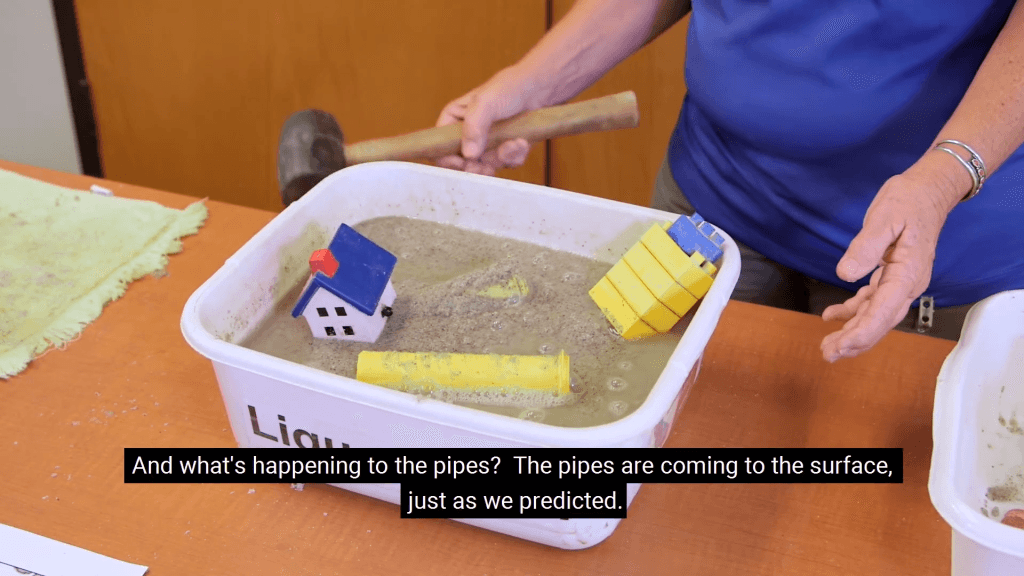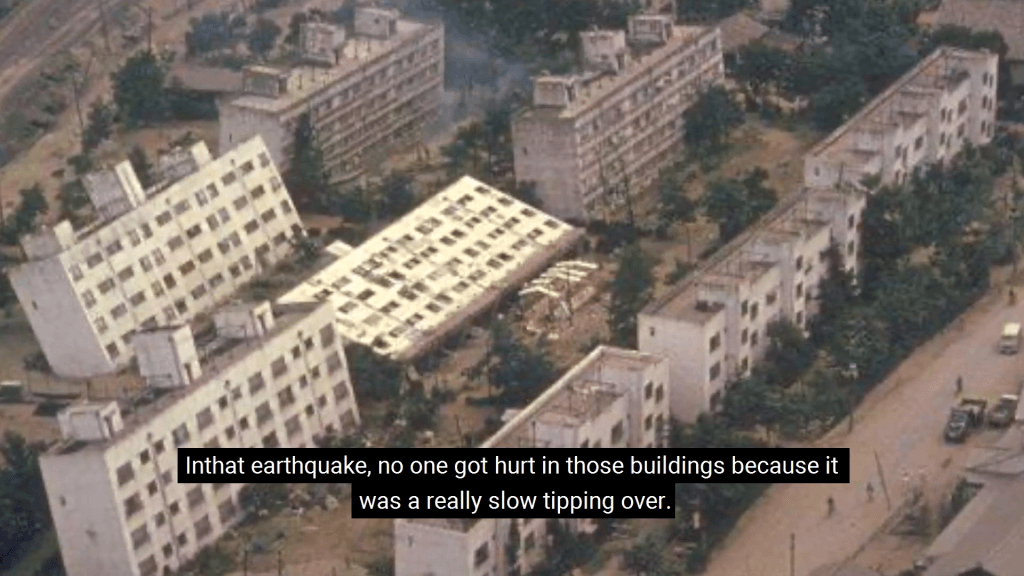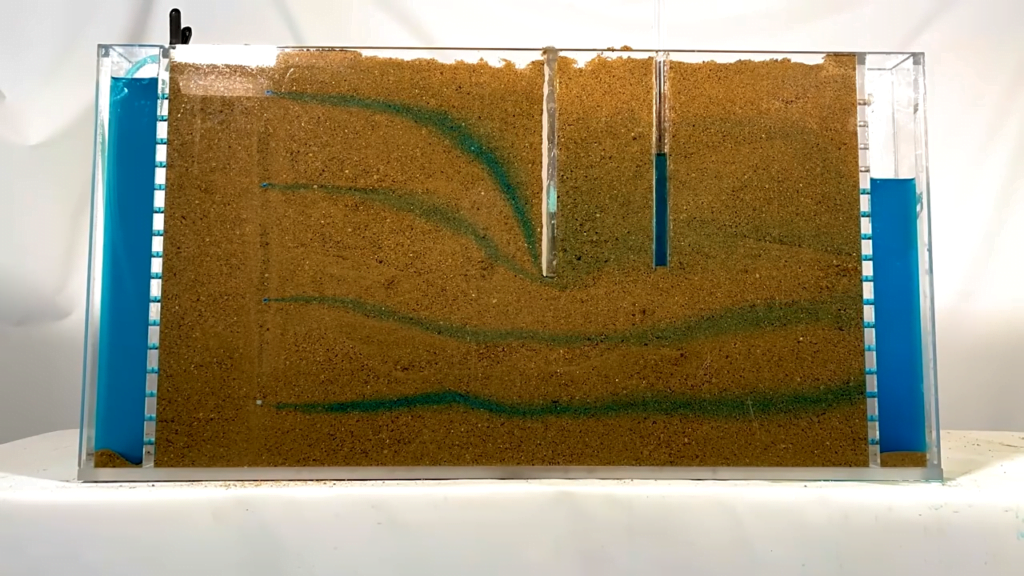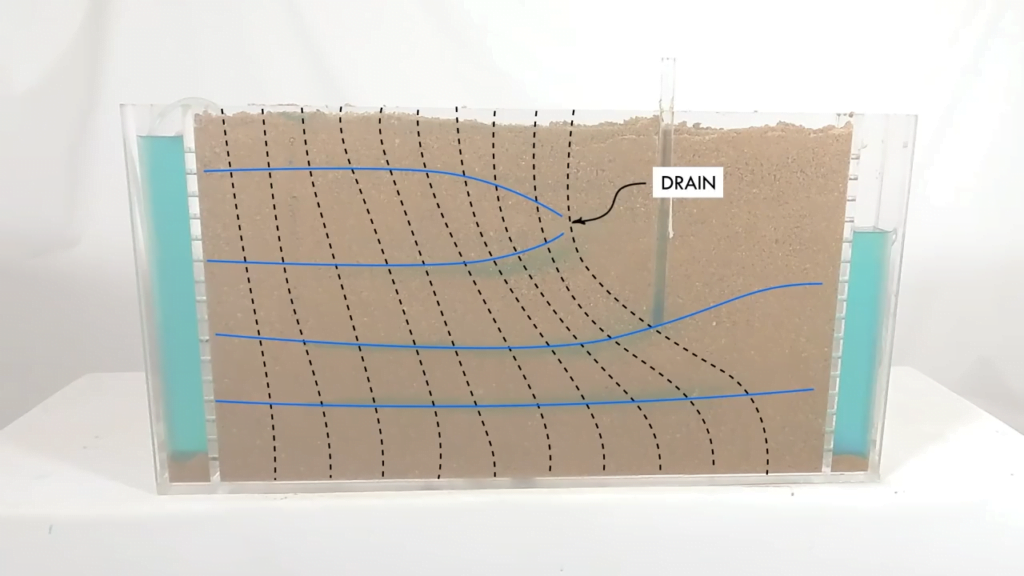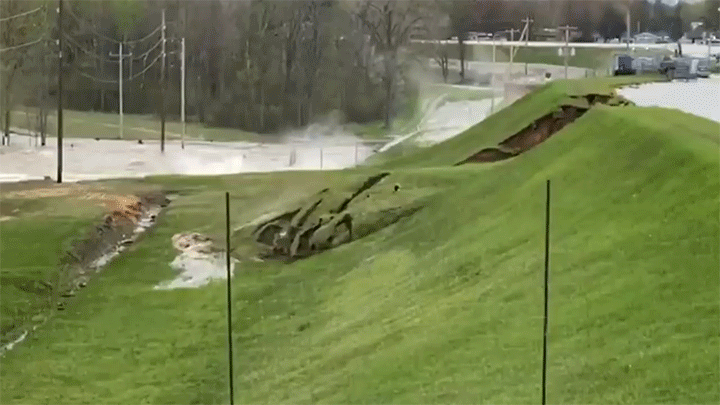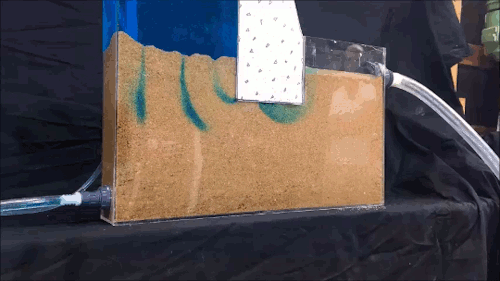In an earthquake, sand and soil particles get jostled together, forcing any water between them up toward the surface. The result is liquefaction, a state where once-solid ground starts to behave much like a liquid. Buildings can tip over and pipelines get pushed toward the surface. In this video, a geologist shows off some great demonstrations of the effect, including ones that can be easily done in a classroom with younger kids. (Video credit: California Geological Survey)
Tag: soil liquefaction

Groundwater-Structure Interactions
Groundwater can sometimes wind up in unexpected places, given the way it interacts with subsurface structures. In this Practical Engineering video, Grady discusses the paths that groundwater takes around structures and how civil engineers account for groundwater-related forces on dams and other buildings. As always, he illustrates with excellent model demos, allowing viewers to see groundwater interactions for themselves. (Image and video credit: Practical Engineering)

Dam Failure
In a recent video, Practical Engineering tackles an important and often-overlooked challenge in civil engineering: dam failure. At its simplest, a levee or dam is a wall built to hold back water, and the higher that water is, the greater the pressure at its base. That pressure can drive water to seep between the grains of soil beneath the dam. As you can see in the demo below, seeping water can take a curving path through the soil beneath a dam in order to get to the other side. When too much water makes it into the soil, it pushes grains apart and makes them slip easily; this is known as liquefaction. As the name suggests, the sediment begins behaving like a fluid, quickly leading to a complete failure of the dam as its foundation flows away. With older infrastructure and increased flooding from extreme weather events, this is a serious problem facing many communities. (Video and image credit: Practical Engineering)


Escaping Quicksand
Quicksand is complicated stuff. It’s typically a mixture made up of sand, clay, and water. To get those ingredients into a proper quicksand mixture, you have to liquefy the particles by saturating the spaces between them with water, as the jumping tourists in the top animation are doing. (That’s not to say that you can’t just find a patch of quicksand – just that something has to have pumped that area full of water first.)
If you end up in quicksand, don’t panic. Quicksand is denser than a human, which means that, at the worst, you won’t sink in much further than your waist (middle image). It’s tough to move once you sink because your weight has squeezed a lot of the water out from between the sand and clay particles, thereby drastically increasing the viscosity. To get out, try putting weight on one leg and wiggling the other back and forth (bottom image). This lets water back in the mixture and hopefully lets you free that leg. Once one leg is free, try to kneel on it and work the other leg out. (Image credits: making quicksand – T. L. Nguyen, source; stuck – National Geographic, source; escape – Tech Insider, source; research credit: G. Evans et al., A. Khaldoun et al.)

Soil Liquefaction
Soil liquefaction is a rather unsettling process in which apparently solid ground begins moving in a fluid-like way after agitation. It occurs in loose sediments when the spaces between individual particles become nearly saturated with water. This can happen, for example, after heavy rains or in a place with inadequate drainage. Such cases are typically very localized, though, and require some significant agitation of the surface, like pressing with heavy machinery or jumping in a single spot. Soil liquefaction becomes a greater danger, however, in an earthquake. Even in a dry area, the earth’s shaking can force groundwater up into the surface sediment and vibrate the soil sufficiently to liquify it, causing whole buildings to sink or tip and wreaking havoc on manmade infrastructure. (Video credit: jokulhlaups)


